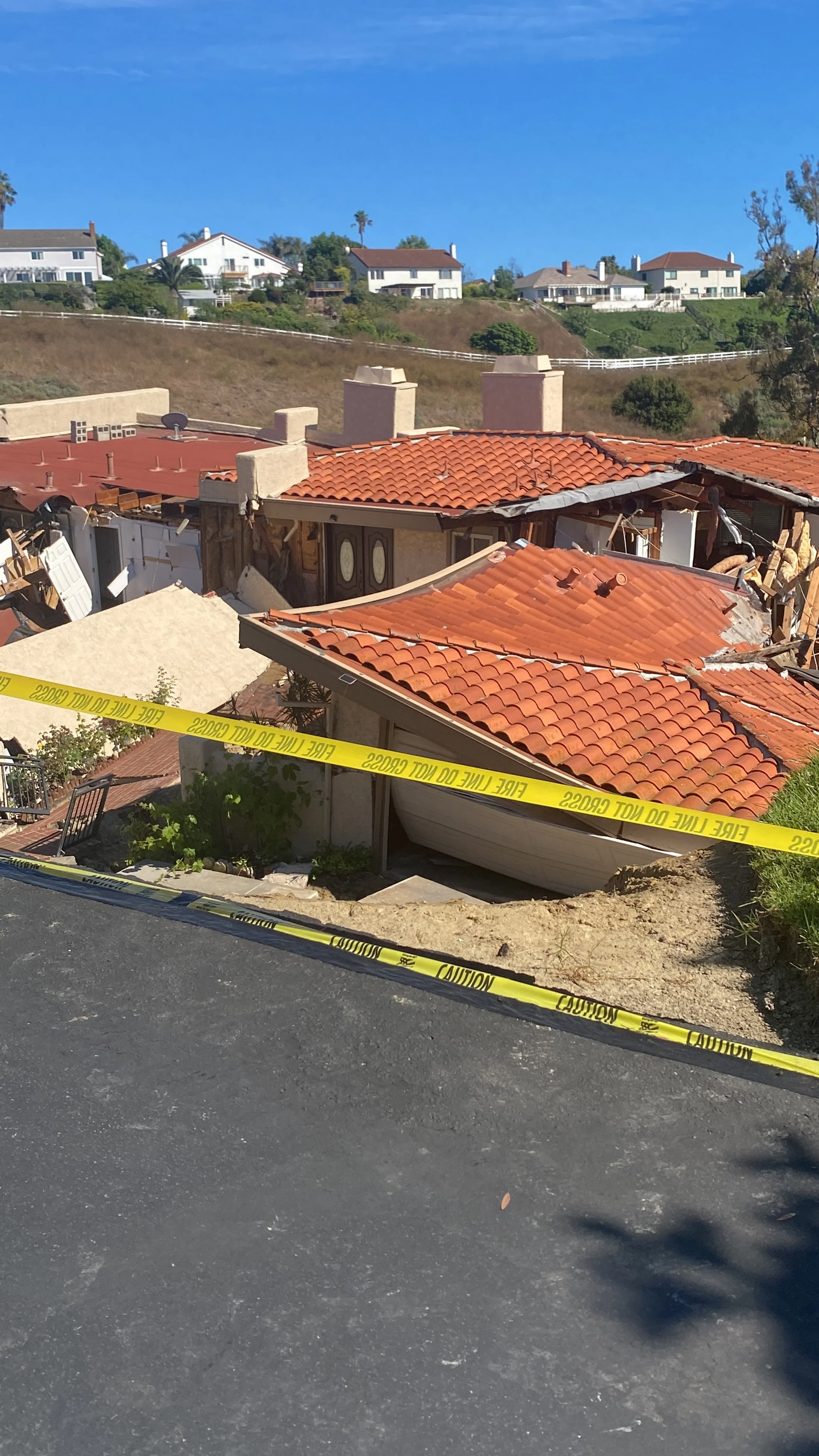Waking up in a house on the Palos Verdes Peninsula seems, at least to me, like the closest thing to living in Paradise. Oceans glimmering with sunlight, stretching out as far as the eye can see. Steep cliffs cloaked in greenery, dropping off into rolling waves hundreds of feet below. Sandy, crescent-shaped beaches, curving along the coast in vast swathes of white-gold.
I’ve only worked in the area for a little while, but already, I can tell it's a place of sunshine and fond memories, a place you’d want your kids to live and grow up in, a place many people are happy to call home.
It doesn’t seem like the kind of place that would be the site of a disaster zone.
But it was when I went there on Thursday, July 13, just a handful of days after a major landslide at Rolling Hills Estates destroyed 12 homes and sent a few of them sliding 20 feet down into the canyon below.
It was awful. The houses looked almost unrecognizable. Some were crumbling or cracked down the middle. Others were turned inside out with their roofs torn open and their pipes spilling out. And still others were left in complete, utter ruin, where the only things left to remember them by were jagged sections of ripped-up road and a lone mailbox perched at the edge of a cliff.
These were no longer homes. They were the corpses of homes, trapped in a slow-motion descent to the canyon floor. And the worst part is, all the former residents can do is watch. As far as I know, they’re still there watching.
But in this place of destruction, of beauty marred by calamity, I was able to watch a community come together. I saw people comforting each other in their shared sorrow. I saw residents providing whatever information they could to the appropriate authorities. I saw officials from several levels of government all congregate at this one place to express solidarity and support for those who had lost everything.
LA County Supervisor Janice Hahn, State Senator Ben Allen, Councilmember Frank Zerunyan, even Assemblymember Al Muratsuchi, the official I’m interning with this summer, they were all present at the site to address the concerns of the Rolling Hills Estates residents and to reassure them that they’d do whatever they could to help. As I observed them interacting with and listening to their constituents, I saw how the presence and attention of government can bring hope to those who suffer serious losses, but I also became more aware of the limitations of government.
During the visit, I had the chance to listen to an emergency services representative explain to Rolling Hills Estates residents the concrete financial and community support they could realistically expect from different levels of government. On the local level, the city government had mobilized quickly to provide each evacuated family with money and hotel accommodations. They also set up centers for those who lost their driver’s licenses, passports, and other identity documents in the landslide to get new ones. However, there’s a significant gap in the support local government can provide. Typical homeowner’s insurance doesn’t cover events like landslides or earthquakes, so most, if not all, of the damaged homes were not insured against the landslide. According to the emergency services representative, if the damage to their homes isn’t covered by insurance, there’s likely no other source of funding available to these people. Local and state governments don’t provide those kinds of funds. That’s something only FEMA, a federal department, can do. But the State of California hasn’t declared a state of emergency yet, which means Rolling Hills Estates doesn’t have access to FEMA funds. Moreover, it’s unlikely that the federal government will consider the landslide worthy of FEMA intervention since “only” 12 homes were destroyed.
Overall, this experience has taught me that the overlapping and interlocking structures of government cooperate to address situations such as the landslide at Rolling Hills Estates, but that there exists a significant shortfall in the financial support government can provide when disasters occur at smaller scales. It begs the question: should the need for disaster relief really be assessed based on the total quantity of affected individuals? Or should it be assessed by how much each affected individual requires assistance? So that even if “only” 12 families are affected as opposed to 12 million, those 12 families could still have access to FEMA funds if it was determined that they really needed it?
Assemblymember Al Muratsuchi, State Senator Ben Allen, LA County Supervisor Janice Hahn, and several others inform Rolling Hills Estates residents of the support they can realistically expect from different levels of government.
The views and opinions expressed in this publication are those of the author and do not reflect the views or positions of CAUSE or the CAUSE network.
Written by Meghna Nair, Leadership Academy 2023 Intern.
The CAUSE Leadership Academy (CLA) for students is a nine-week, paid, internship program that prepares college undergraduates to lead and advocate for the Asian Pacific Islander community on their campuses and beyond.


